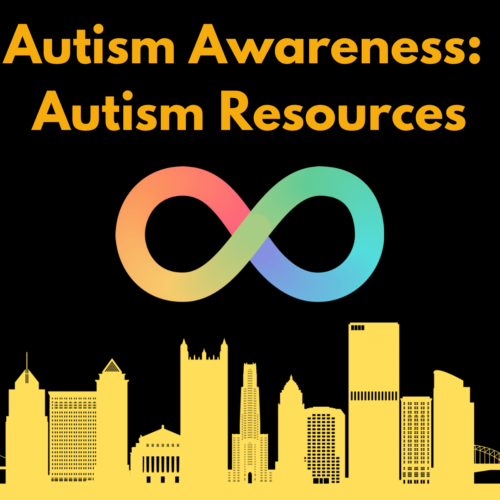
What’s in a Name? – Westmoreland County
June 1, 2020
14 Activities to do With Kids This Summer
June 22, 2020It’s no secret that Pittsburgh is not the sunniest of places to live. According to Current Results Weather and Science Facts, Pittsburgh annually receives 45% of sunshine. The number measures “the percentage of time between sunrise and sunset that sunshine reaches the ground.”
While we know that dark, dreary days affect our mood and mental health, the lack of sunshine here may also have implications for our physical health.
What is Vitamin D?
Vitamin D is a vitamin that works throughout the entire body. It is particularly associated with the immune system, but also has a role in the nervous system. The National Institutes of Health describes vitamin D as a fat-soluble vitamin. That means that it can be stored in our fat cells (unlike water-soluble vitamins). Vitamin D can be acquired from the foods we eat and from sunshine. When ultraviolet rays from sunshine hit our skin, it triggers receptors in our skin to make vitamin D.
Here is a list of the many functions of Vitamin D:
- it is essential for the immune systems, enabling it to fight off bacteria and viruses
- allows the nervous system to send messages throughout the body
- enables the body to absorb calcium to build strong bones and help muscles to move
How Do You Know If You Are Vitamin D Deficient?
Doctors don’t generally test for vitamin D deficiency, but there are blood tests available. Symptoms are the greatest indicators of vitamin D deficiency. They include bone pain, fatigue, muscle aches, general pain or weakness, and depressed mood. Researchers estimate that 42% of Americans are vitamin D deficient.
Why Are We Deficient?
There are very few foods that are high in vitamin D. Fatty fish like tuna and salmon, and egg yolks are a few foods that do provide higher amounts of this vitamin. However, most people don’t eat enough of the those foods to be adequately supplied with the nutrients. Sunshine is the second source for vitamin D. The National Institutes of Health says that factors such as “season, time of day, length of day, cloud cover, smog, skin melanin content, and sunscreen are among the factors that affect UV radiation exposure and vitamin D synthesis.”
A February 2020 study reported that, “the prevalence of patients with vitamin D deficiency is highest in the elderly, the obese patients, nursing home residents, and hospitalized patients.” As we age, our bodies become less efficient at making vitamin D from sunlight. As a result, the elderly are more vulnerable to vitamin D deficiency. Perhaps that is one of the factors that explains why our older population was hit so hard in the Covid-19 pandemic.
Given that Vitamin D is fat soluble, one might logically conclude that overweight people would have a greater store of the vitamin to draw from. However, that is not the case. A 2009 research study published in PLOS Medicine found that, “For every 10 percent increase in body-mass index (BMI), a person can expect to have a 4.2 percent drop in blood levels of vitamin D.” That may explain why overweight individuals have a higher risk of deficiency.
Some Surprising Findings
With the onset of the COVID-19 pandemic, some surprising findings about vitamin D have come to light (pardon the pun.) Several studies have shown a correlation between vitamin D and being susceptible to the virus. The BMJ medical journal has published one such finding.
It reported that Somalis living in Sweden had a much higher rate of contracting the disease. Swedish health authorities reported that Somalis accounted for 6% of all the confirmed cases. That is 10 times more than their population share. (As of June 2020).
It may seem counter intuitive, but those with darker skin make less vitamin D from sunlight. Many of the Somalis are Muslim and dress accordingly—which often means covering most of their skin. This has led researchers to conclude that the Somalian community in Sweden is more susceptible to COVID-19 because of a vitamin D deficiency. Conversely, native Swedes tend to eat a lot of the vitamin D rich fatty fish, which would boost their intake.
How Much D Do We Need?
Essentially, the medical community is not sure how much vitamin D our bodies require. In a 2017 Mayo Clinic article the clinic “recommends that adults get at least the RDA of 600 IU. However, 1,000 to 2,000 IU per day of vitamin D from a supplement is generally safe, should help people achieve an adequate blood level of vitamin D, and may have additional health benefits. While there are no guidelines for checking your vitamin D blood level, it may be prudent in people with osteoporosis or certain other health conditions. Discuss with your health care provider if it may be beneficial to check your vitamin D level.”
What Can We Do?
Unless you can persuade your doctor to write you a prescription for a trip to the tropics during the winter, you have two options. First, when it is sunny, try to take in some rays. You don’t need to lay out for hours and aim to look like George Hamilton. Exposing as much skin as possible for 10-30 minutes several times a week without sunscreen is all it takes.
Second, you can increase your consumption of vitamin D rich foods, but unless you’re into snacking on sardines, taking a vitamin D supplement can be beneficial. There are two types of vitamin D supplements, D2 and D3. Vitamin D2 must be prescribed by a physician, often for use in treating medical conditions such as rickets. The D3 supplement is what regular people can get over the counter at their local pharmacy.
However, you don’t want to start gobbling vitamin D as you can take too much of it. Some symptoms of an over-abundance of vitamin D include nausea, constipation, confusion, slurring of words and stumbling, and weakness. As with any supplement, before you take it, you should always consult your physician.
More Study Needed
In conclusion, we all need vitamin D, and the bad news is many of us are deficient in it. It is clear that we need more medical studies to understand how vitamin D can boost our immune systems and ward of disease. The good news is that we can easily acquire vitamin D by seeking the sun, consuming vitamin-rich foods, and supplementing our diets.
Written by Janice Lane Palko




